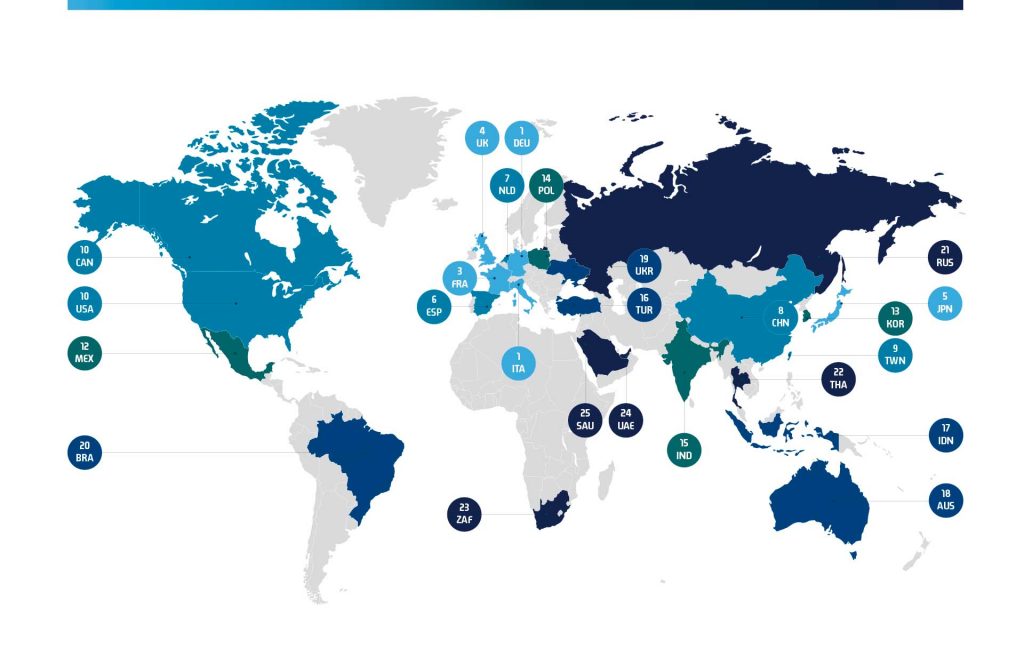Environment and sustainability

Environment and sustainability
Embedding Energia Europa’s energy efficiency systems contributes to a more sustainable environment.
Our devices are not only cost-effective but generate a wide range of environmental and sustainability gains at the same time.
We believe that protecting the environment and making social contributions is an essential value, that has been left on the sideline for many centuries, for every company.
Nowadays, ecological awareness is also a real competitive edge, a feather in cap for companies that can prove with facts that they are at the forefront of their commitment to the environment and, therefore, to current society and future generation.
The solutions designed by Energia Europa to improve energy efficiency act across the board and in the long run, helping cut back on the main air pollutants.
CO2
Human activity is responsible for a significant proportion of global warming. In particular, CO2 causes 63% of anthropogenic global warming, as it acts as a greenhouse gas.
The natural greenhouse effect consists in the ability of the atmosphere to retain heat, and is one of the mechanisms underlying the development of life as we know it on the planet.
However, it is a mechanism that must remain in balance: the massive emission of greenhouse gases due to human activities has broken this balance, leading to uncontrollable climate change that may turn fatal.
The above data on carbon dioxide clearly shows that dramatically cutting back on CO2 emissions is urgently needed(EU source).
Reducing energy consumption is an essential requirement to curb emissions.
65% of the current Italian energy mix consists of fossil fuels (GSE source); each kWh produced emits up to 400 grams of CO2 into the atmosphere (ISPRA 363/2022 data), without counting the grid losses stemming from utility power meters, which cause an increase in actual emissions per kWh.
NOx
Nitrogen oxides are another category of greenhouse gases (ISPRA source) and are mainly derived from road transport (43%), energy production (23%) and commercial, institutional and domestic activities.
In addition to an increased greenhouse effect, the harmful effects on the environment also include acid rain and soil acidification. This not only results in a decrease in biodiversity, due to their toxicity, but direct damage to the health of plants, animals and humans as well (EU source).
Reducing consumption with a view to fostering the environment and sustainability leads to a curb in NOx emissions.
SOx
These are six different gaseous sulphur compounds, produced in nature by volcanic eruptions, whereas the anthropogenic contribution of SOx emissions into the atmosphere is mainly due to combustion (thermoelectric power plants, internal combustion engines, heating, industrial processes).
The main contaminant is sulphur, resulting in acid rain and humans and animals intoxication.
SOx are also classified as greenhouse gases (ISPRA 363/2022 source).
Disposal of electrical equipment and lighting fixtures
Prolonging the life span of machinery and lighting fixtures is one of the indirect environmental and sustainability benefits resulting from embedding EP-X solutions.
The best power quality provided by EP-X solutions reduces the stress and strain on machinery and lighting fixtures, resulting in less maintenance work and longer life cycle, thus decreasing maintenance and replacement costs and lessening the pollution from waste production.
In particular, for lighting fixtures containing mercury, the danger posed to ecosystems by this specific pollutant is limited.
Light pollution
Light pollution cannot be overlooked in an overall discussion on the environment and sustainability.
The emission of night light outside human use areas increases the amount of ambient light, bringing it above natural levels.
A more than 10% increase in the lowest level of natural light is considered to be light pollution.
Light pollution damages the ecosystem by adversely affecting plant and animal circadian rhythms, resulting in damage to human health as well as sleep disorders with physiological and psychological consequences (Arpae source).
In addition to products for improving energy efficiency, Energia Europa also offers integrated solutions to reduce light pollution, with its LED DIVISION.
The Kyoto protocol
It is an agreement under the United Nations Framework Convention on Climate Change (UNFCCC).
The countries which ratified the protocol pledged to reduce their carbon dioxide emissions and five other greenhouse gases.
The Kyoto Protocol now covers more than 180 countries around the world, responsible for over 60% of global greenhouse gas emissions.
The ultimate objective is to achieve “the stabilization of greenhouse gas concentrations in the atmosphere at a level that would prevent dangerous anthropogenic human-induced interference with the climate system”.
Energy efficiency policies:
Together with Germany, Italy ranks first in terms of energy efficiency policies.
The American Council for an Energy-Efficient Economy (ACEEE) scrutinised the efficiency and performance policies of the world’s 25 main energy consuming countries.
Together these nations account for 78% of all the energy consumed on the planet.
Energy efficiency policies were assessed based on both qualitative (best practices implemented) and quantitative (energy savings obtained) indicators.
Italy and Germany take the first place in the ranking, boasting the highest score: 75.5 out of 100.
Also France, the United Kingdom and Japan stand out among the best.
The average score recorded for this edition of the report (end of 2018) was 50.5 points, evidence that all the countries surveyed still show opportunities for improvement.

ACEEE 2018 source
Environment and sustainability as the primary focus of our services

